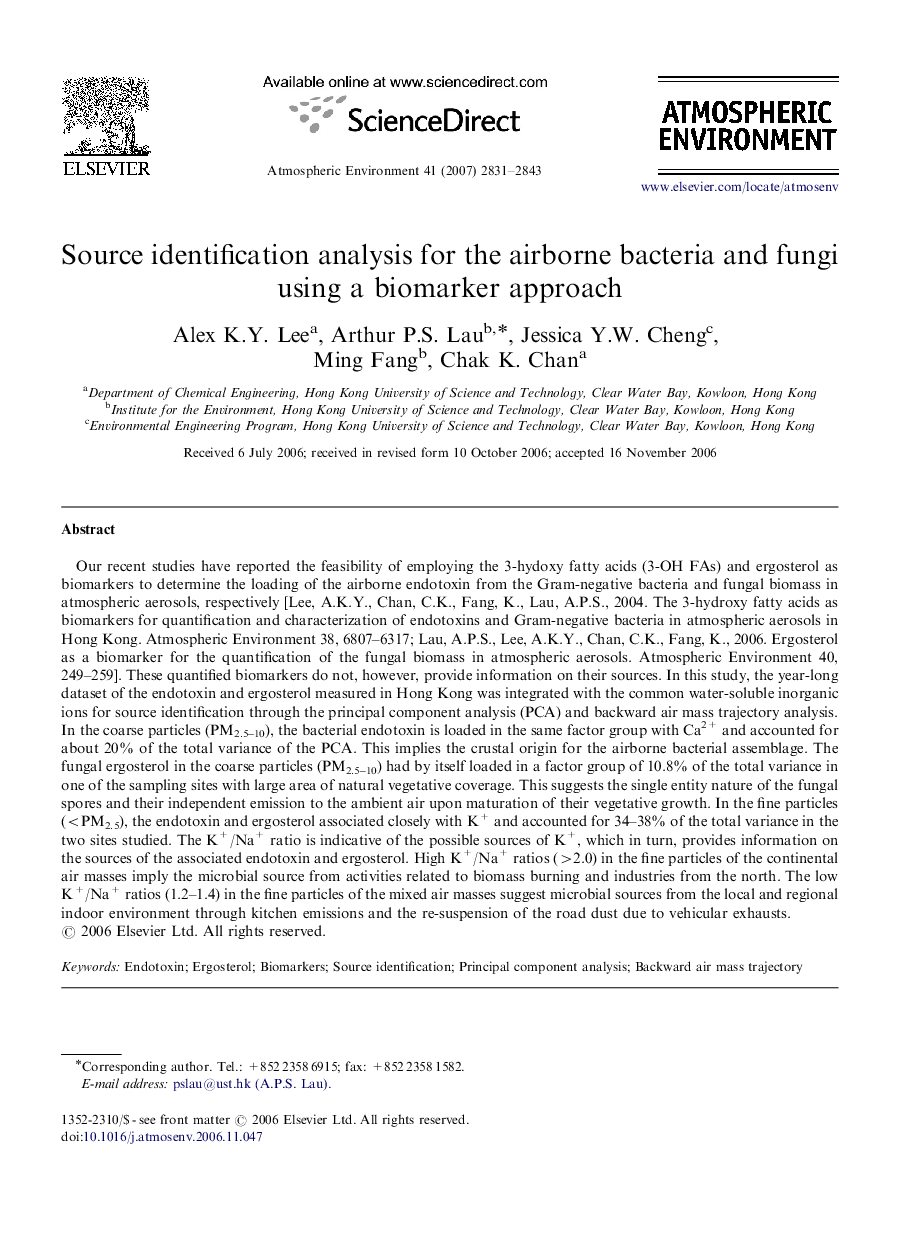| کد مقاله | کد نشریه | سال انتشار | مقاله انگلیسی | نسخه تمام متن |
|---|---|---|---|---|
| 4442945 | 1311172 | 2007 | 13 صفحه PDF | دانلود رایگان |

Our recent studies have reported the feasibility of employing the 3-hydoxy fatty acids (3-OH FAs) and ergosterol as biomarkers to determine the loading of the airborne endotoxin from the Gram-negative bacteria and fungal biomass in atmospheric aerosols, respectively [Lee, A.K.Y., Chan, C.K., Fang, K., Lau, A.P.S., 2004. The 3-hydroxy fatty acids as biomarkers for quantification and characterization of endotoxins and Gram-negative bacteria in atmospheric aerosols in Hong Kong. Atmospheric Environment 38, 6807–6317; Lau, A.P.S., Lee, A.K.Y., Chan, C.K., Fang, K., 2006. Ergosterol as a biomarker for the quantification of the fungal biomass in atmospheric aerosols. Atmospheric Environment 40, 249–259]. These quantified biomarkers do not, however, provide information on their sources. In this study, the year-long dataset of the endotoxin and ergosterol measured in Hong Kong was integrated with the common water-soluble inorganic ions for source identification through the principal component analysis (PCA) and backward air mass trajectory analysis. In the coarse particles (PM2.5–10), the bacterial endotoxin is loaded in the same factor group with Ca2+ and accounted for about 20% of the total variance of the PCA. This implies the crustal origin for the airborne bacterial assemblage. The fungal ergosterol in the coarse particles (PM2.5–10) had by itself loaded in a factor group of 10.8% of the total variance in one of the sampling sites with large area of natural vegetative coverage. This suggests the single entity nature of the fungal spores and their independent emission to the ambient air upon maturation of their vegetative growth. In the fine particles (
Journal: Atmospheric Environment - Volume 41, Issue 13, April 2007, Pages 2831–2843